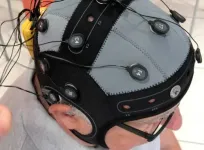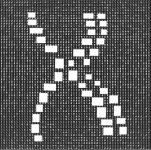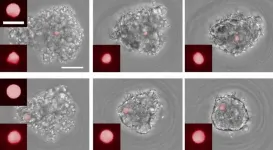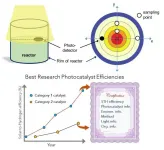(Press-News.org) Using AI and computer automation, Technion researchers have developed a "conjecture generator" that creates mathematical conjectures, which are considered to be the starting point for developing mathematical theorems. They have already used it to generate a number of previously unknown formulas. The study, which was published in the journal Nature, was carried out by undergraduates from different faculties under the tutelage of Assistant Professor Ido Kaminer of the Andrew and Erna Viterbi Faculty of Electrical Engineering at the Technion.
The project deals with one of the most fundamental elements of mathematics - mathematical constants. A mathematical constant is a number with a fixed value that emerges naturally from different mathematical calculations and mathematical structures in different fields. Many mathematical constants are of great importance in mathematics, but also in disciplines that are external to mathematics, including biology, physics, and ecology. The golden ratio and Euler's number are examples of such fundamental constants. Perhaps the most famous constant is pi, which was studied in ancient times in the context of the circumference of a circle. Today, pi appears in numerous formulas in all branches of science, with many math aficionados competing over who can recall more digits after the decimal point: 3.1415926535897932384626433832795028841971693993751058209749445923078164062862089986280348253421170679821480865132823066470938446095505822317253594081284811174502841027019385211055596446229489549303820...
The Technion researchers proposed and examined a new idea: The use of computer algorithms to automatically generate mathematical conjectures that appear in the form of formulas for mathematical constants.
A conjecture is a mathematical conclusion or proposition that has not been proved; once the conjecture is proved, it becomes a theorem. Discovery of a mathematical conjecture on fundamental constants is relatively rare, and its source often lies in mathematical genius and exceptional human intuition. Newton, Riemann, Goldbach, Gauss, Euler, and Ramanujan are examples of such genius, and the new approach presented in the paper is named after Srinivasa Ramanujan.
Ramanujan, an Indian mathematician born in 1887, grew up in a poor family, yet managed to arrive in Cambridge at the age of 26 at the initiative of British mathematicians Godfrey Hardy and John Littlewood. Within a few years he fell ill and returned to India, where he died at the age of 32. During his brief life he accomplished great achievements in the world of mathematics. One of Ramanujan's rare capabilities was the intuitive formulation of unproven mathematical formulas. The Technion research team therefore decided to name their algorithm "the Ramanujan Machine," as it generates conjectures without proving them, by "imitating" intuition using AI and considerable computer automation.
According to Prof. Kaminer, "Our results are impressive because the computer doesn't care if proving the formula is easy or difficult, and doesn't base the new results on any prior mathematical knowledge, but only on the numbers in mathematical constants. To a large degree, our algorithms work in the same way as Ramanujan himself, who presented results without proof. It's important to point out that the algorithm itself is incapable of proving the conjectures it found - at this point, the task is left to be resolved by human mathematicians."
The conjectures generated by the Technion's Ramanujan Machine have delivered new formulas for well-known mathematical constants such as pi, Euler's number (e), Apéry's constant (which is related to the Riemann zeta function), and the Catalan constant. Surprisingly, the algorithms developed by the Technion researchers succeeded not only in creating known formulas for these famous constants, but in discovering several conjectures that were heretofore unknown. The researchers estimate this algorithm will be able to significantly expedite the generation of mathematical conjectures on fundamental constants and help to identify new relationships between these constants.
As mentioned, until now, these conjectures were based on rare genius. This is why in hundreds of years of research, only a few dozens of formulas were found. It took the Technion's Ramanujan Machine just a few hours to discover all the formulas for pi discovered by Gauss, the "Prince of Mathematics," during a lifetime of work, along with dozens of new formulas that were unknown to Gauss.
According to the researchers, "Similar ideas can in the future lead to the development of mathematical conjectures in all areas of mathematics, and in this way provide a meaningful tool for mathematical research."
The research team has launched a website, RamanujanMachine.com, which is intended to inspire the public to be more involved in the advancement of mathematical research by providing algorithmic tools that will be available to mathematicians and the public at large. Even before the article was published, hundreds of students, experts, and amateur mathematicians had signed up to the website.
The research study started out as an undergraduate project in the Rothschild Scholars Technion Program for Excellence with the participation of Gal Raayoni and George Pisha, and continued as part of the research projects conducted in the Andrew and Erna Viterbi Faculty of Electrical Engineering with the participation of Shahar Gottlieb, Yoav Harris, and Doron Haviv. This is also where the most significant breakthrough was made - by an algorithm developed by Shahar Gottlieb - which led to the article's publication in Nature. Prof. Kaminer adds that the most interesting mathematical discovery made by the Ramanujan Machine's algorithms to date relates to a new algebraic structure concealed within a Catalan constant. The structure was discovered by high school student Yahel Manor, who participated in the project as part of the Alpha Program for science-oriented youth. Prof. Kaminer added that, "Industry colleagues Uri Mendlovic and Yaron Hadad also participated in the study, and contributed greatly to the mathematical and algorithmic concepts that form the foundation for the Ramanujan Machine. It is important to emphasize that the entire project was executed on a voluntary basis, received no funding, and participants joined the team out of pure scientific curiosity."
INFORMATION:
Prof. Ido Kaminer is the head of the Robert and Ruth Magid Electron Beam Quantum Dynamics Laboratory. He is a faculty member in the Andrew and Erna Viterbi Faculty of Electrical Engineering and the Solid State Institute. Kaminer is affiliated with the Helen Diller Quantum Center and the Russell Berrie Nanotechology Institute.
When treating cancer, researchers are always searching for ways to remove cancer cells while minimizing damage to the rest of the body. One possible approach is to find processes unique to cancer cells, and which would allow specific targeting. If such a process can be disrupted, only those cells would be affected.
A process (or absence thereof) can be unique to some types of cancer, and not be present in others. In such a case, we would want a simple way to recognize whether a particular tumor possesses the unique trait or not. The implication of this question is whether the tumor would respond to ...
Researchers from the HSE Institute for Cognitive Neuroscience have proposed a new method to process magnetoencephalography (MEG) data, which helps find cortical activation areas with higher precision. The method can be used in both basic research and clinical practice to diagnose a wide range of neurological disorders and to prepare patients for brain surgery. The paper describing the algorithm was published in the journal NeuroImage.
Magnetoencephalography (MEG) is a method based on measuring very weak magnetic fields (several orders of magnitude weaker than the Earth's magnetic field) induced by the brain's electrical activity. When using MEG, researchers face the complicated task ...
Professionalisation in any field requires long-term experience and training. In the past decades, studies have demonstrated that the professionalisation of athletes and artists create differences in the behaviour of the brain while carrying out activities related to their area of expertise.
To detect the effects of media professionalisation in the brain, a research team from the Universitat Autònoma de Barcelona, the Instituto Ràdio Televisió Espanyola and the Universidad Pablo de Olavide in Seville conducted a study published in Frontiers in Systems Neuroscience in which audiovisual contents were presented to a group of media ...
Machines, thanks to novel algorithms and advances in computer technology, can now learn complex models and even generate high-quality synthetic data such as photo-realistic images or even resumes of imaginary humans. A study recently published in the international journal PLOS Genetics uses machine learning to mine existing biobanks and generate chunks of human genomes which do not belong to real humans but have the characteristics of real genomes.
"Existing genomic databases are an invaluable resource for biomedical research, but they are either not publicly accessible or shielded behind long and exhausting application procedures due to valid ethical concerns. This creates a major scientific barrier for researchers. Machine-generated genomes, or artificial ...
PROVIDENCE, R.I. [Brown University] -- A new technique developed by Brown University researchers reveals the forces involved at the cellular level during biological tissue formation and growth processes. The technique could be useful in better understanding how these processes work, and in studying how they may respond to environmental toxins or drug therapies.
As described in the journal Biomaterials, the technique makes use of cell-sized spheres made from a highly compliant polymer material, which can be placed in laboratory cultures of tissue-forming cells. As the tissue-formation process unfolds, microscope imaging of the spheres, which are stained with fluorescent dye, reveals the extent to which they are deformed by the pressure of surrounding cells. A ...
Bird species that live in their natural habitats can help zoos learn how to manage those in captivity, according to a new review.
Birds are the most diverse group housed by zoos around the world, but zoo-based research tends not to focus on birds.
A new article published in the journal Birds, by Dr Paul Rose of the University of Exeter, suggests zoos can improve management of birds by looking at how species live in their natural habitats.
Likewise, birds living under the care of humans can also help guide and develop conservation action for those living in the wild.
"Research into wild birds is extremely useful for furthering how birds are managed in zoos," said ...
Scientists have made a significant breakthrough in the quest to understand the intricate processes that occur in the brain during seizures that are the key symptom of epilepsy.
A team of scientists from the University of Exeter has studied the mechanisms behind distinctive patterns of electrical activity of neuron groups in the brain that accompany the onset of seizures.
In healthy brains, networks of neurons move through states of similar behavior - known as synchronization - and dissimilar behavior, called desynchronization. These processes are also associated with both memory and attention.
However, in a brain with a neurological disorder, such as epilepsy, ...
Neuroscientists at McMaster University have found a link between children who are at risk for developmental coordination disorder (DCD), a common condition that can cause clumsiness, and difficulties with time perception such as interpreting changes in rhythmic beats.
Accurate time perception is crucial for basic skills such as walking and processing speech and music.
"Many developmental disorders, including dyslexia or reading difficulties, autism and attention deficits have been linked to deficits in auditory time perception," says Laurel Trainor, senior author of the study and founding director of the McMaster Institute for Music and the Mind.
Previous research has shown the brain ...
(Boston)--A new study recommends healthy children with symptoms of sleep disordered breathing, such as snoring or temporary cessation of breathing, should consider undergoing a sleep study (polysomnography) and should discuss the potential benefits of this with their pediatrician or otolaryngologist to possibly manage the child's symptoms medically and before surgery.
Sleep disordered breathing is common in children and ranges from mild snoring to severe sleep apnea. Doing a sleep study provides more information on the severity of the condition. Often doctors suggest adenotonsillectomy ...
Utilization of renewable solar energy is crucial for addressing the global energy and environmental concerns and achieving sustainable development in our society. In this regard, photocatalytic water splitting has attracted significant interest as a cost-effective means to convert sustainable solar energy into valuable chemicals.
However, efficiency is sensitive to reaction conditions and experimental setup, it is difficult to compare the results obtained by different research groups or provide a reliable guide for large-scale implementation. Due to the ...




